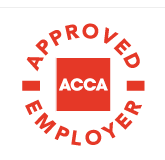What are the key aspects you needs to know about deregistering for VAT as a business owner?
After reading this post you will gain an understanding on the VAT deregistration process, including what makes you eligible and what you need to consider.

VAT Deregistration
Deregistration means that a business is no longer VAT registered and is not required to charge VAT on its goods and services, this also means that VAT cannot be claimed back on items purchased.
Eligibility for VAT Deregistration
Businesses may be eligible for VAT deregistration if:
- Turnover Falls Below the VAT Threshold: If your taxable turnover over a rolling twelve-month period falls below the VAT deregistration threshold of £83,000, you can apply for deregistration.
- Cease Trading: If you cease trading, you may need to deregister for VAT.
- No Longer Making Taxable Supplies: If your business stops making taxable supplies (e.g., you exclusively provide exempt supplies), you may be eligible for deregistration.
Steps to Deregister for VAT
- Assess Eligibility: Review your business’s turnover and circumstances to determine if you meet the criteria for VAT deregistration.
- Submit Deregistration Form: If you’re eligible, you must notify HMRC by completing and submitting a VAT 7 form. You can do this online using HMRC’s VAT online services, assistance can be provided by an accountant who has access to your HMRC online services.
- Provide Required Information: When completing the deregistration form, you’ll need to provide details about your business, including your VAT registration number, what you expect your turnover will be in the following 12 months, the reason for deregistration, and the effective date of deregistration.
- Pay Outstanding VAT: Ensure that you’ve paid any outstanding VAT liabilities before applying for deregistration.
- Inform Suppliers and Customers: Once your deregistration is approved, notify your suppliers and customers that you are no longer registered for VAT and ensure that your invoices no longer have VAT included.
- File Final VAT Return: Ensure you file your final VAT return to HRMC, including all of the Vatable income and expenditure up to the date of deregistration.
Considerations for VAT Deregistration
- Timing: Choose the most appropriate time to deregister for VAT based on your business circumstances. Consider factors such as cash flow, the impact on pricing, and administrative changes.
- Impact on Business: Assess how deregistering for VAT will affect your business operations, pricing strategies, and competitiveness in the market.
- Record-Keeping Obligations: Even after deregistration, you must maintain accurate financial records for a specified period as required by HMRC.
- Future Turnover: If your turnover falls below the VAT threshold but you anticipate exceeding it again in the future, consider if deregistering is worthwhile.

By understanding the eligibility criteria, following the necessary steps, and considering the implications, you can make informed decisions regarding VAT deregistration that support with your business goals. Book a free discovery call by clicking the link below!
Please get in touch on 01273 441187 or book a discovery call with one of our expert accountants.
Contact

You May Also Like…







